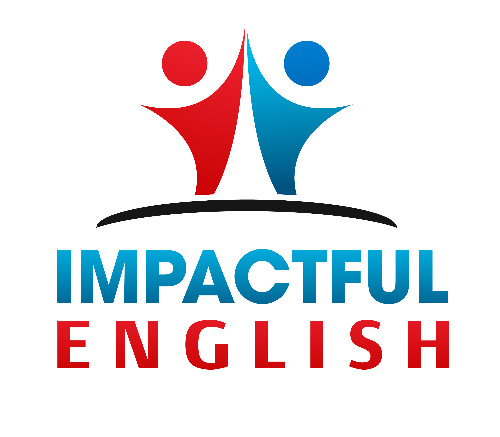How to Enhance English Fluency with Language ‘Chunks’
In this guide, you’ll discover how learning language ‘chunks’ can significantly improve your English fluency and help you sound more native-like.
To begin with, let’s get clear on what language ‘chunks’ are.
‘Chunks’ are another name for groups of words or expressions. Up to 60% of English language use involves chunks, which include collocations (e.g., “by the way”), phrasal verbs, (e.g. “get over”), idiomatic expressions (e.g. “see eye to eye”), and other fixed expressions (e.g. “In my opinion…”).
Learning language chunks matters because they convey meaning more effectively than isolated words. Mastering chunking will enable you to sound more natural and will also help enhance your listening skills because native speakers think and speak in chunks.
A frequent mistake I see English learners making is focusing too much on individual words and not enough on learning whole expressions. Without the use of chunks, learners may produce incorrect phrases (e.g., “strong rain” instead of “heavy rain”).
Furthermore, chunking greatly enhances your ability to use the correct grammar.
Central to becoming fluent in English is the ability to use chunks.
So today, I want to share with you four practical steps to master chunking. I’ll also leave 10 common language chunks that are useful to know for professional interactions.
Step 1: Learn Chunks You Will Likely Use
Step 2: Practise Saying the Chunks
Step 3: Use Chunks in Real-life Conversations
Step 4: Review Chunks
10 Common Chunking Expressions for Professional Interactions
Let’s dive deeper into each step.
Step 1: Learn Chunks
Mastering chunks begins with having a learning strategy that enables you to acquire expressions that will be relevant and useful to you.
Since your study time is limited, it makes sense to master ten expressions you will use consistently, as opposed to ten that are rarely used.
Therefore, start by asking yourself:
“Which situations do I want to expand my English and use more native-like expressions?”
Is it for meetings, presentations, or day-to-day conversations?
Once you have defined the kind of expressions you want to learn look for the resources that will support you best.
Inside the Impactful English Academy, you will find common chunking phrases for everyday situations and professional interactions. If you want to go deeper, you can access 100s of expressions for meetings, presentations, negotiations, and networking. Click here to learn more.
Step 2: Practise Saying the Chunks
Before using the chunks in real-life situations, I suggest practising them as part of your study routine. The more you rehearse them, the more natural and confident you will sound when saying them.
Anticipate conversations and consider when you can use these new expressions.
Furthermore, record yourself saying them aloud and self-evaluate.
Step 3: Use Chunks in Real-life Conversations
The next step is to apply these chunks in real-life conversations.
This is something you have to do intentionally. What I mean by this is that you need to choose the expressions you intend to use.
For example, if you’re attending a meeting, write down the expressions in your notebook and look out for opportunities to use them.
This is a very important step because when you use new language in real-life contexts it helps you remember it.
Step 4: Review Chunks
The final step is to establish a reviewing routine for these new expressions. Unfortunately, most non-natives miss this step when it comes to building vocabulary and learning new expressions.
The reason review is so important is because studies suggest that the number of repetitions needed to learn a new word is about 10-15 times. Moreover, you want to review new words and expressions in different contexts over a period of time.
Two tools that will help you with this are Quizlet and YouGlish.
With Quizlet, you can create digital flashcards. It’s amazing how many you can get through in just a few minutes.
YouGlish finds YouTube videos using the newly learned expression, so this is a great tool for hearing the expression in different contexts.
10 Common Chunking Expressions for Professional Interactions
To end with, here are some common expressions that are useful to know in professional interactions:
“Would it be possible if…”
Would it be possible if you could provide the latest sales report by tomorrow?
“I was wondering if you might…”
I was wondering if you might be available for a meeting later this afternoon.
“Do you suppose you could…”
Do you suppose you could review the draft of the proposal before we send it out?
“In addition to that…”
In addition to that, we need to consider the budget constraints for this project.
“Furthermore, it’s worth noting that…”
Furthermore, it’s worth noting that the marketing team has already started on the campaign.
“Interestingly enough…”
Interestingly enough, the feedback from the survey aligns with our initial assumptions.
“From my perspective…”
From my perspective, investing in new software would greatly benefit our productivity.
“In my view…”
In my view, we should focus on improving customer service to retain our client base.
“To be frank…”
To be frank, I don’t think the current timeline is realistic for completing this project.
“Another point to consider is…”
Another point to consider is the impact this decision might have on our international branches.
Conclusion
All in all, I highly recommend incorporating chunking phrases into your English learning routine. This will boost your ability to comprehend native speakers and enhance your grammatical correctness, helping you sound more like a native.





